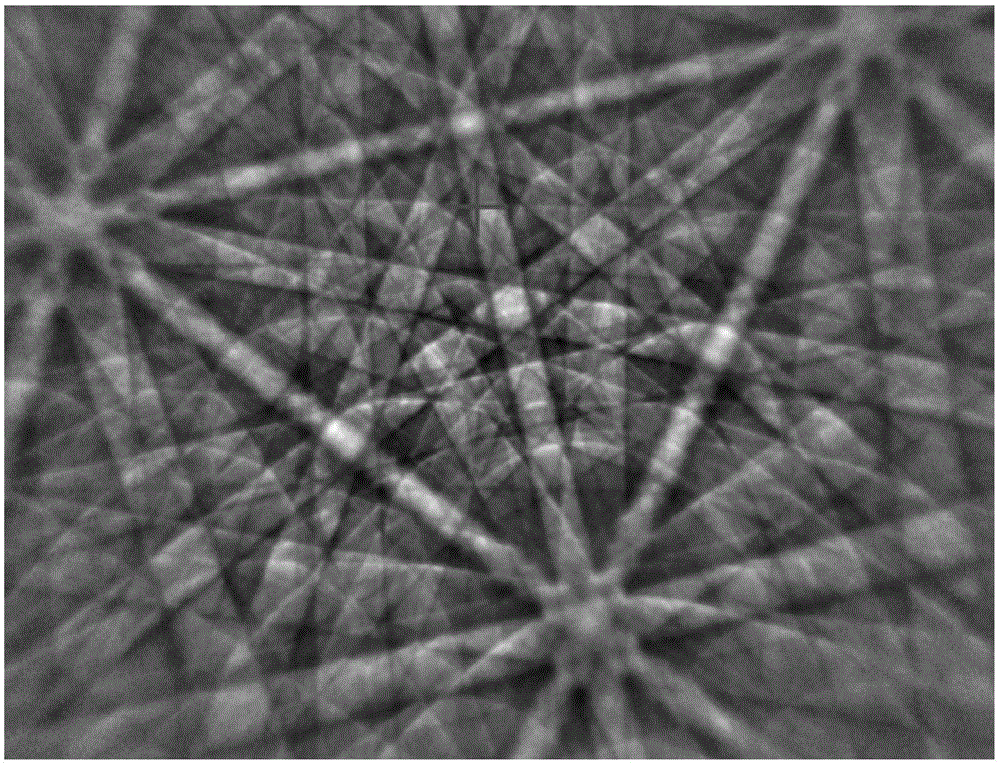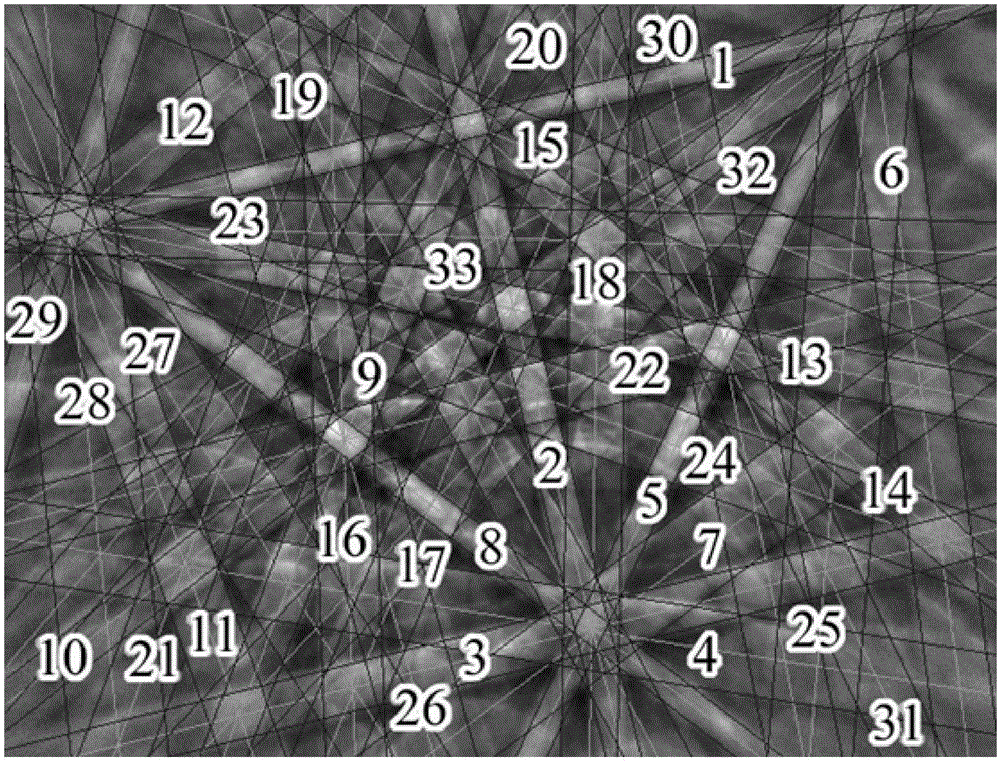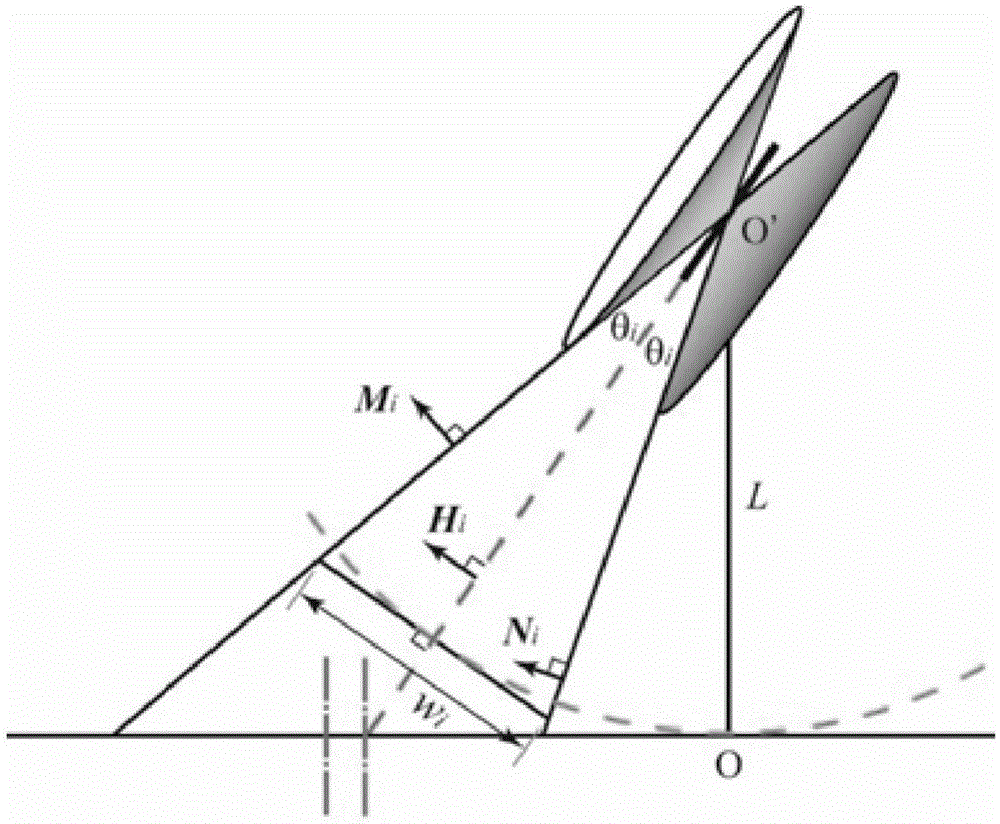Method for determining crystal reciprocity primitive cell basis vector based on EBSD pattern
A reciprocal vector and pattern technology, applied in discharge tubes, instruments, measuring devices, etc., can solve the problems of false unit cell volume, large measurement error of Kikuchi belt width, and unclear edge contrast of Kikuchi belt.
- Summary
- Abstract
- Description
- Claims
- Application Information
AI Technical Summary
Problems solved by technology
Method used
Image
Examples
Embodiment Construction
[0032] In order to make the above objects, features and advantages of the present invention more comprehensible, the present invention will be further described in detail below in conjunction with the accompanying drawings and specific embodiments.
[0033] Step 1), collecting the EBSD pattern of the crystal sample on the SEM, figure 1 It is the EBSD pattern collected in steel, the image width is 151.1mm, the cross in the figure is PC, DD=0.5886, the accelerating voltage is 20kV,
[0034] electron beam wavelength λ = 1.5 U ( 1 + 0.9788 × 10 - 6 U ) = 0.008577 n m ...
PUM
 Login to View More
Login to View More Abstract
Description
Claims
Application Information
 Login to View More
Login to View More - R&D
- Intellectual Property
- Life Sciences
- Materials
- Tech Scout
- Unparalleled Data Quality
- Higher Quality Content
- 60% Fewer Hallucinations
Browse by: Latest US Patents, China's latest patents, Technical Efficacy Thesaurus, Application Domain, Technology Topic, Popular Technical Reports.
© 2025 PatSnap. All rights reserved.Legal|Privacy policy|Modern Slavery Act Transparency Statement|Sitemap|About US| Contact US: help@patsnap.com



